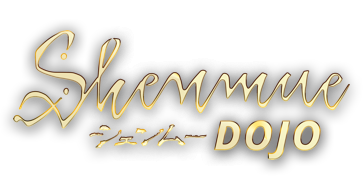A semi-related random thought: I think I've probably said here before that I think many people potentially aren't used to the unorthodox style of story telling in Shenmue III (or the series as a whole, really), and to sort of expound on that, I think something people might react poorly to, possibly subconsciously, is the fact there's almost never a moment of exposition (particularly with dialogue) outside of Ryo's purview. It's really rare to have a story these days that doesn't have scenes with expository dialogue, where the main character(s) aren't present, to let the audience in on certain details
This is definitely intentional. I think this type of storytelling works really well for Shenmue since it immerses us better in Ryo's journey and keeps the aura of mystery. I get why most stories don't do this though, but it's a good call for Shenmue.
Although technically I should point out that Shenmue does break this formula a few times namely, in the Shenhua prologue, scenes and Xuiying's and Shenhua's flashbacks. But there are necessary times where expositing additional information to the player makes sense if done sparingly.
Specifically there was a section that I saw from chapter 2 with a scene where Dou Niu is reprimanding Yuan, in his office, when Yuan reports that he failed to kidnap Zhu.
Where did you find this? I've had a hard time finding anything about the original scripts. I'm assuming it was something like a screenshot you caught a glimpse of a few sentences. If so, are there anymore like it? I'm really interested in this sort of thing.
I also dug around in an old save looking for moments where Ryo could ask about the tree or the spring or Feng and found this little scene:
I knew it!
I remember arguing about this when the game came out but couldn't find the clip where he said it was a Sakura tree. I was always perplexed since I didn't initially notice the notebook entry saying it was a Shenmue tree until after I finished the game. This makes a lot more sense because I feel like the game would have drawn attention to it being a second Shenmue tree if that were the case. Also, it mirrors the Sakura tree in Ryo's yard, with Iwao training under it.
Honestly, I think they did that in English just to make it explicit for western audiences. Just as an example of a Japanese player's reaction to seeing that tree:
I'm thinking this might be the case. Where they didn't make it explicit originally but gave the direction to do so in the English translation. However, there are arguments against it as well.
For one, it is made really clear that Shenhua say's "Sakura" when referring to the tree in the Ternary Spring instead of Shenmue. She does reference the Shenmue tree by name in other convo's so it's hard to believe this isn't intentional.
Secondly, while the tree looks similar to the Shenmue tree it is never called out as such (except the aforementioned notebook entry). It could be a case of reusing assets rather than intentionally making it a Shenmue tree. Likewise the Japanese never calls it out explicitly and I wonder why the subtlety in one language and not the other; especially for something so important where the game lacks subtlety in areas like this. Considering the translations were done at the same time (it wasn't a later amendment) it's possible that it's just an error or assumption on the translator's part. This isn't far fetched given how poor the translation is in other areas.
Third, it poetically mirrors the tree in the yard. As for Sakura trees not growing in China, we also see a Shinto shrine in Niaowu so it doesn't seem S3 is slavish to authenticity.
Lastly, it really takes away from the gravitas that S2 places on the Shenmue tree being special and ancient if there are many more of them. It's possible there is another tree based on Shenhua's flashback/dream but it is also possible that is the same tree in an earlier time period (Bailu goes back to Tang dynasty after all). Either way, I can't see the games not drawing attention to it if they ever were to encounter a second tree.
IMO, I'm assuming it is not a Shenmue tree until S4 corrects me otherwise.
It's not explicit but the flashback is definitely a different location than Shenhua's house that we see. It also seems like a different time period, which opens up the possibility it is Shenhua's house from hundreds of years before but seems unlikely imo
I'm inclined to believe this is the case. Maybe its Luoyang however since Shenhua does mention the city of the emporer. Bailu was built in Tang and originally fortified so it may be the case that it was the original village nearly a thousand years back. It also makes sense since the Shenmue tree is smaller in the flashback. However, I'm partial to believing there is only one tree since I like the idea that it's unique and special. I'm ok either way though.


